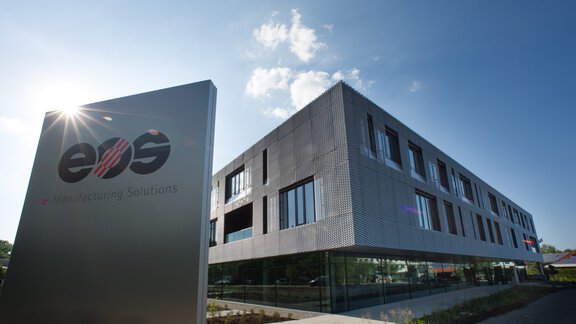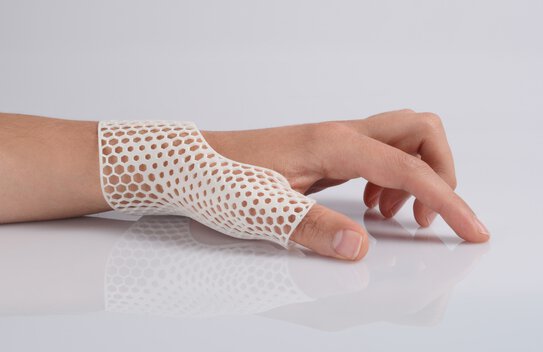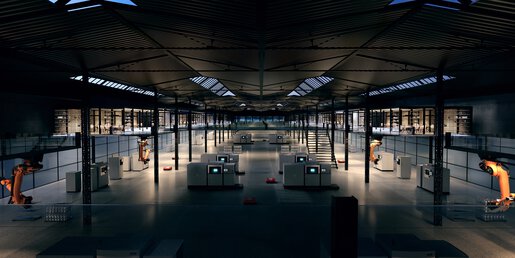3D printing is changing the world of production. But the technology can lead to much bigger change in society –by changing business models, transforming working environments and delivering added value and sustainability.
EOS produces systems for the Additive Manufacturing of components in both metal and polymers. Our customers include companies in the aerospace, medical technology, and toolmaking sectors as well as the automotive industry. Additive Manufacturing is a high-precision, 3D printing process for making a broad range of products and industrial components using digital 3D data that are directly transmitted to a “printer”. There, the powdered materials are melted with pinpoint accuracy via laser technology, thus creating highly complex parts layer by layer. The geometric possibilities of this technology are practically unlimited and therefore also its industrial applications. Structures no longer need to be limited to the capabilities of conventional production methods, but enjoy a great deal of design freedom. Even individual parts and small-scale batches can be profitably produced.
3D Printing Is Rewriting the Laws of Product Development and Manufacturing
This complex technology has the potential to fundamentally change the industrial value chain and make a massive impact on the production scenarios of the future. Design freedom, customization, sustainability, rapid product developments, and the accompanying cost advantages are generating the impulses for the flexible manufacturing processes of the present day.
Component adaptations are both digitally and physically easy to implement, right from the product development stage – simply by adjusting the 3D data. Development cycles are therefore reduced to a minimum and sustainable product innovations can be rapidly implemented at lower cost.
Comprehensive functional integrations such as springs or hinge joints can be directly designed into the component. Complicated structures can be created without the need for tools and subcomponents can be reduced to a minimum.
For example, using EOS technology, ArianeGroup was able to reduce the injector head of a rocket engine powering the Ariane 6 from 248 individual parts to one single functionally integrated component. Created using Additive Manufacturing, the engine part is 25 percent lighter than its predecessor and production time was cut by a factor of 3, enabling ArianeGroup to reduce its costs by 50 percent.
From Creative Ideas to a Business Model within a Short Time
The “maker” movement is gaining momentum through the endless implementation options that 3D printing offers. The barriers to market entry for this new manufacturing technology are low. Additive Manufacturing has proven to be profitable, even for small batches, and is enabling new business models. This technology is opening up a whole new world of possibilities for entrepreneurs, as the only things required are a good idea and internet access – everything else is freely accessible at any time via the World Wide Web. Software exists as freeware, while internet-based marketplaces and online shops serve as sales channels. Manufacturing capacities are available at any time via platforms that offer Additive Manufacturing production services (such as Shapeways or Sculpteo).
New Opportunities for the Working World of Tomorrow
3D printing is an essential part of Industry 4.0, i.e. the buzzword that describes technology and production in the era of the digital revolution. Like every industrial revolution, the fourth stage is also causing job profiles to change. Whether 3D printing, robotics, Artificial Intelligence, or technology convergence – the increasingly interconnected digital world is opening up new opportunities, changing the existing, and creating the new. The cutting out of various intermediate stages and the shift from physical manpower to digital processes is having a long-term influence on the structures and working conditions of the future. These far-reaching changes will mean fewer uses for some types of work relating to conventional production, but new jobs will be created in the digital field, in IT, in design, or in completely new fields of activity. As this technology is making it possible to establish companies without a great deal of investment, 3D printing will play its part in counteracting the trend towards workforce reduction caused by digitalization. The new possibilities are giving people with good ideas the chance to start an enterprise with a relatively low level of seed capital, regardless of where they are located.
Sustainability and Quality of Life for Tomorrow’s World
Industrial 3D printing is making the localized “on-demand” manufacturing of components and spare parts economically viable, as it is becoming possible to produce the parts right where they are needed. The technology enables production to be decentralized, as components can be produced directly and locally, cutting logistics costs and reducing carbon emissions at the same time.
The manufacturing process itself also requires far fewer resources. In conventional production operations such as milling, 85 percent of the blank is simply cut away, generating a great deal of expensive waste. Industrial 3D printing, however, is quite the opposite as most of the residual powdered material can be reused. Both the systems and the components they manufacture have a highly positive impact on preserving valuable resources. Energy-efficient machines produce components that save a considerable volume of resources and promote the sustainable use of raw materials due to their design freedom, functional integration, and lightweight construction options. The simplification of designs and improved material characteristics made possible through additive technology can, for instance, mean that the wall thicknesses of components is greatly reduced without losing any of their robustness. The weight reduction achieved using this technology additionally generates savings in terms of lower fuel consumption.
One field in particular where 3D printing truly is having the most noticeable impact, is that of medical technology. Although it has been possible to manufacture components such as dental implants, joints, artificial limbs, and parts of the skull in the past, they were only available as standard products. However, people differ greatly in terms of physique and their bodies also change as they age. Here, the customized shapes and sizes made possible by 3D printing can have an immense influence on people’s quality of life, as this technology can be used to manufacture made-to-measure prosthetic devices and dental implants that are precisely created to match the anatomy of each patient, significantly encouraging the healing process and therefore each patient’s chances of recovery.
For example, the UK startup company Andiamo uses EOS systems to produce tailor-made orthoses for children, which are otherwise conventionally created by using plaster casts. The process is painstaking, elaborate and the resulting product is less adjustable to the individual. Particularly young patients who are still growing are obliged to repeatedly undergo this procedure. They are often required to wait for up to six months for an orthosis that often no longer fits by the time it is delivered. Additive Manufacturing reduces this waiting time to a minimum. A 3D body scan is used as the basis for manufacturing a precisely fitting orthosis that can be delivered within one week.
Conclusion
The possible applications for 3D printing are practically unlimited, as it is capable of producing flexible, light, and yet stable designs that only use as much raw material as required to make the product. The process is revolutionizing industrial manufacturing processes and helping create new business models. Its application in medical technology is facilitating healing processes and simultaneously improving patients’ quality of life.
The integration of industrial 3D printing in both existing and future production scenarios is a catalyst for innovative product design, marketing, and the sustainable use of resources.
Contact








